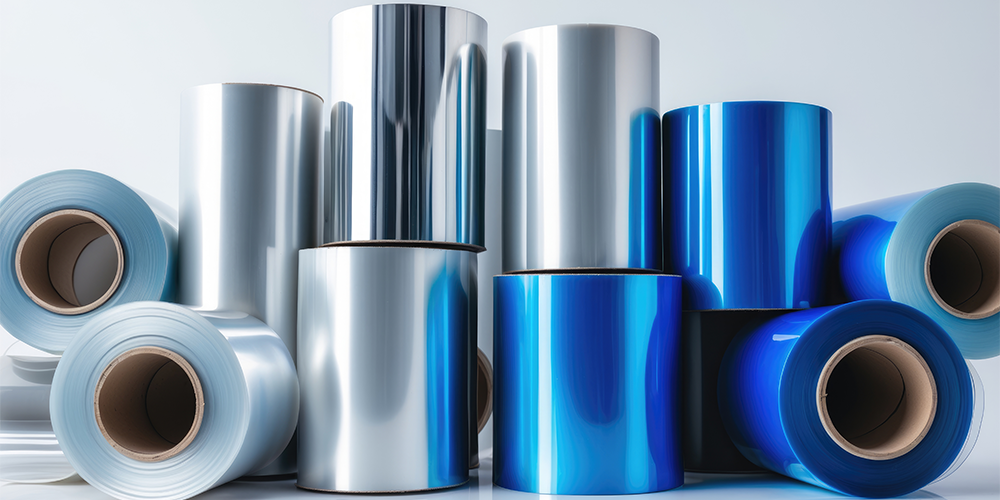The Best Thermal Transfer Ribbon for Every Label Type

Choosing the wrong thermal transfer ribbon for your label material leads to smudging, fading, and lost time—but the right match gives you crisp, durable prints every single time. Whether you're labeling outgoing packages or products bound for industrial warehouses, matching ribbons to label materials correctly is the key to success.
Here’s exactly how to get flawless thermal transfer printing without costly mistakes.
Why Matching Your Thermal Ribbon to Your Label Material Matters
If your ribbon doesn’t match your label, the ink won't bond properly.
This causes:
- Smudged prints
- Scratched-off text or barcodes
- Poor chemical or moisture resistance
- Premature label failure in the field
Matching ensures your labels survive the conditions they face — whether it’s warehouse dust, chemical splashes, outdoor exposure, or just frequent handling.
Thermal Transfer Ribbon Types
Each type of thermal transfer ribbon—wax, wax/resin, and resin—is designed for different materials and conditions. Choosing the best thermal transfer ribbon for your labels depends on durability needs, print surface, and environmental exposure. If you’re unsure whether wax or resin is the right choice, we’ve got a guide that breaks it down.
Wax Ribbons
Best for: White paper labels
Durability: Basic — good for indoor, low-contact labels
Pros: Cost-effective, fast printing, clean barcode printing
Limitations: Easily scratched or damaged in humid or abrasive environments
Wax/Resin Ribbons
Best for: Paper labels (including colored) and some synthetics
Durability: Moderate — better resistance to smudging, moisture, and abrasion
Pros: Flexible choice for mixed-use labeling (shipping, retail, light warehouse)
Limitations: More expensive than wax ribbons, not fully chemical resistant
Resin Ribbons
Best for: Synthetic labels (polypropylene, polyester, vinyl)
Durability: High — stands up to chemicals, UV exposure, abrasion, and water
Pros: Ideal for harsh environments like labs, manufacturing, and outdoor equipment
Limitations: Higher cost, requires synthetic label stock

Matching Thermal Transfer Ribbons with the Right Material
| Label Material | Recommended Ribbon Type | Common Conditions Considered |
|---|---|---|
| White Paper Labels | Wax Ribbon | Indoor use, basic handling |
| Colored Paper Labels | Wax/Resin Ribbon | Handling, slight moisture |
| Polypropylene Labels | Wax/Resin or Resin Ribbon | Mild abrasion, light chemical splash |
| Polyester Labels | Resin Ribbon | Heavy abrasion, chemical exposure |
| Vinyl Labels (Outdoor) | Resin Ribbon | UV exposure, water, extreme abrasion |
Here’s what this looks like in action…
- Shipping Labels (Low-risk): → White paper labels + Wax ribbon = clean and cost-efficient.
- Retail Product Labels: → Colored paper labels + Wax/Resin ribbon = prevents fading during shelf life.
- Durable Warehouse Labels: → Polypropylene labels + Wax/Resin ribbon = resist scuffs and dirt.
- Chemical Drum Labels: → Polyester labels + Resin ribbon = survive chemical spills and rough transport.
Pro Tips for Choosing the Right Thermal Ribbon
- If the label faces chemicals, moisture, or heavy handling — go resin. No exceptions.
- If you’re printing simple shipping labels — wax will save you money.
- Don’t mismatch ribbon darkness and print speed settings on your printer; tweak them for best image quality.
- Remember: Environmental exposure > Label material > Then ribbon type.
Common Mistakes to Avoid (and What Happens)
| Mistake | What Happens |
|---|---|
| Using wax on synthetic labels | Text smears or peels off easily |
| Using resin on paper labels | Poor adhesion, faded prints |
| Ignoring handling conditions | Labels tear, scratch, or lose important info |
| Not calibrating printer settings | Ribbon wrinkles, incomplete prints |
Here’s how that plays out for small teams…
A food manufacturer tried using wax ribbons for freezer labels on synthetic stock.
Result? The labels cracked and peeled after a few days in cold storage.
Switching to resin ribbons immediately solved the problem — crisp, durable labeling even in extreme cold.
Printer Settings Matter
Choosing the right ribbon is critical — but adjusting your printer settings makes a huge difference too:
- Darkness setting: Make prints bolder without overheating the ribbon.
- Print speed: Slower speeds usually yield sharper, longer-lasting images on high-res materials.
- Label calibration: Always recalibrate after changing label size, material, or ribbon type.
Small tweaks = much better results.
Need the Right Thermal Transfer Ribbons?
Finding the perfect match between ribbon and label material makes your labels stronger, cleaner, and longer-lasting. We offer thermal transfer printing ribbons built for every job — from simple warehouse shipping to rugged industrial labeling — available in wax, wax/resin, and resin formulas to fit your needs.
FAQs About Thermal Ribbons
What happens if I use a resin ribbon on paper labels?
The ribbon won’t bond properly. Prints may appear faint, flake off, or smear easily under contact.
Can wax/resin ribbons work on polyester labels?
They’ll print, but won’t offer the high-level chemical or abrasion resistance needed. Resin is the only safe choice for demanding conditions.
Is there a universal ribbon that works on all materials?
No. Each ribbon type is engineered for specific materials and conditions. Matching matters.
What printer settings should I adjust after changing ribbons?
Adjust darkness, print speed, and recalibrate the label size to ensure perfect transfer and minimize ribbon wrinkles.
How can I tell if I’m using the wrong ribbon?
Look for signs like smudging, flaking text, incomplete barcodes, or poor scanability — all point to a mismatch between ribbon and label material.



